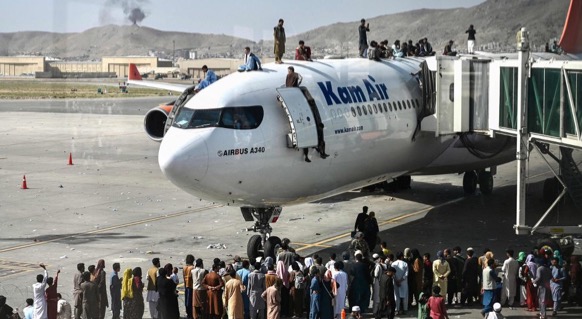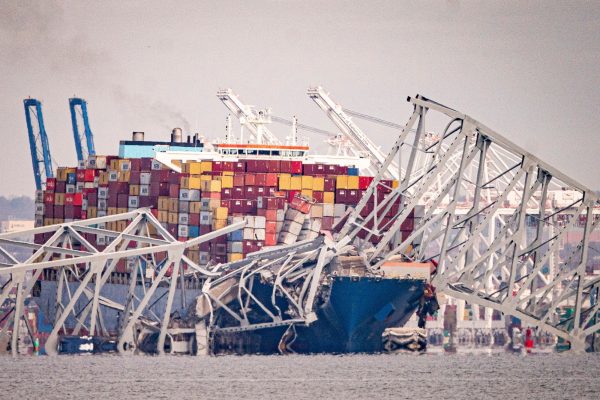Afghanistan—How We Got Here

Chaos has erupted as hundreds of refugees try to flee Afghanistan
The fall of Afghanistan’s capital to the Taliban this week has overtaken every news outlet around the world. A humanitarian crisis with thousands of refugees clamoring to escape the country, oppressive laws against women being reinstated, and a government in shambles have all culminated from decades of a convoluted history.
Afghanistan is a landlocked, Islamic country in South Asia. It’s a desert, mountainous country that has faced civil war, invasion, and foreign occupation all in the last century.
American involvement and the incessant instability of the Afghan nation began during the Cold War. Afghanistan and Russia bordered each other, and it was in both countries interest to sign a friendship treaty. Efforts to establish a more communist government led to an invasion by the Soviet Union in 1979. This provoked several groups called jihadists to fight back against their military, a war that resulted in 1 million civilian deaths. This led to the first wave of refugees fleeing to Pakistan.
They say the enemy of my enemy is friend, and the United States took this saying literally. Engaged in a bitter conflict with the Soviets, the U.S. secretly provided the jihadists with weapons and aid during the 80s. President Ronald Reagan even invited jihadist leaders to the White House for a meeting.
The Geneva Peace Accord signed in 1988 by Afghanistan, Pakistan, the Soviet Union and the U.S. led to the withdrawal of Soviet troops from the country. Afghanistan was under the communist Soviet occupation for almost a decade, and the collapse of the communist Afghan government soon followed the withdrawal, leading to another wave of refugees to surrounding nations. Jihadist leaders fought for control of the capital, Kabul, leaving the city in shambles and 50,000 people dead.
Promising order, safety, and security to the southern Afghanistan, the Taliban, formed from several jihadist groups, quickly rose up power in 1994 by overtaking southern cities.The Taliban conquers Kabul in 1996 and kills the president. They impose harsh rules, especially against women, banning them from working and education.
The largest, most obvious catalyst was of course the World Trade Center attacks on September 11, 2001 by al-Qaeda, a recognized terrorist organization with close ties to the Taliban. When the Taliban refused to hand over their leader, Osama Bin Laden, the U.S. led attacks with the help of NATO against the Taliban and al-Qaeda, overthrowing the Taliban regime in November when they entered Kabul. This was the start of two decades of American occupation in Afghanistan.
In 2020, the capital Kabul experienced an increase in violence from the Taliban. This led to the U.S. and Taliban to sign a peace agreement, promising a withdrawal of U.S. troops and a stop to violence against Americans.
In May, the Taliban traveled north in anticipation of American withdrawal. U.S. troops left a major airfield in July, and on August 15, the Taliban finally took control of the capital, resulting in a wave of refugees and American citizens desperate to leave the country.
The U.S. is hoping to evacuate all American citizens from Afghanistan by the end of the month. As for the rest of the Afghan citizens left in the country, their future is uncertain and all we can do is pray.

Kalea Reeves is a senior at St. Dominic. When she’s not working at McAlister’s, she’s rewatching the Good Place for the seventh time. And no, she...




















